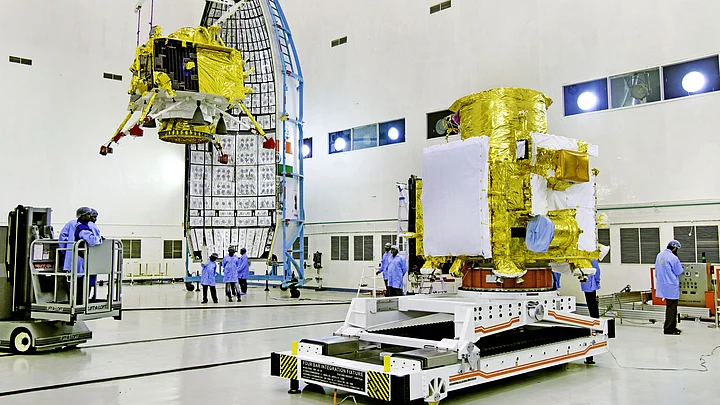Chandrayaan- 2 is headed for the South Pole of the Moon. The world is waiting with bated breath as to what secrets this mission will reveal about the Moon.
There are three primary vehicles that will anchor this mission — the orbiter, Vikram (lander), and Pragyan (rover). Each has been developed to accommodate several payloads and to perform a certain set of tasks and experiments that will give the ISRO scientists and astronomers an in-depth look at the history of the Moon and also help conduct experiments.
Here’s a closer look at the complete project payload of Chandrayaan-2.
Orbiter Payloads
The orbiter has been left out from doing most of the hard work, which is landing on the moon. It has been designed to carry the lander Vikram to within a 100x100 kilometres orbit around the Moon and then stay in an elliptical path around the Moon for the next one year.
The orbiter comprises of a terrain mapping system to draw a 3D map of the moon's surface. The data collected by the terrain mapping camera will give us insights into the evolution of the moon.
There is a soft X-ray spectrometer and a solar X-ray monitor on the orbiter which will help look for signs of essential elements like Magnesium, Aluminium, Silicon, Calcium, Titanium, Iron, and Sodium.
An Orbiter High Resolution Camera (OHRC) has also been placed for it to send high-resolution images of the Moon until it stops orbiting Earth’s natural satellite.
Apart from the above, an Image IR Spectrometer, a dual frequency synthetic aperture radar and an atmospheric composition explorer have been placed to study the Moon’s exosphere. The setup will also measure the electron density in the lunar ionosphere.
The Lander-Vikram
The Chandrayaan-2 lander, Vikram, which weighs 1,471 Kg (including the rover) can generate 650W of solar power. It has been made to communicate directly with the Indian Deep Space Network.
It’s primary responsibility is to take the rover to the moon’s surface by conducting a series of braking manoeuvres.
Something ISRO calls Radio Anatomy of Moon Bound Hypersensitive ionosphere and Atmosphere (RAMBHA) is a primary component of the lander, which has to measure the ambient electron density/temperature near the lunar surface.
The lander will also carry a high-definition camera, thermal profiler, Langmuir probe, seismometer and a laser retroreflector as a part of one of NASA’s experiments.
The Rover-Pragyan
Pragyan is a six-wheeled rover weighing in at just 27 Kg that runs on 50W of solar power and carries a speed of 1cm per second. ISRO says the total range of the rover is 500 metres. The rover can only communicate with the lander and no other source.
The vehicle will carry an array of cameras on it with an alpha-proton X-ray spectrometer, and laser-induced ablation spectroscopy experiment.
In this experiment a laser is used to form a plasma, which atomises and excites samples and then studies the radiation emitted by the decaying plasma.
— with inputs from isro.gov.
(At The Quint, we question everything. Play an active role in shaping our journalism by becoming a member today.)
